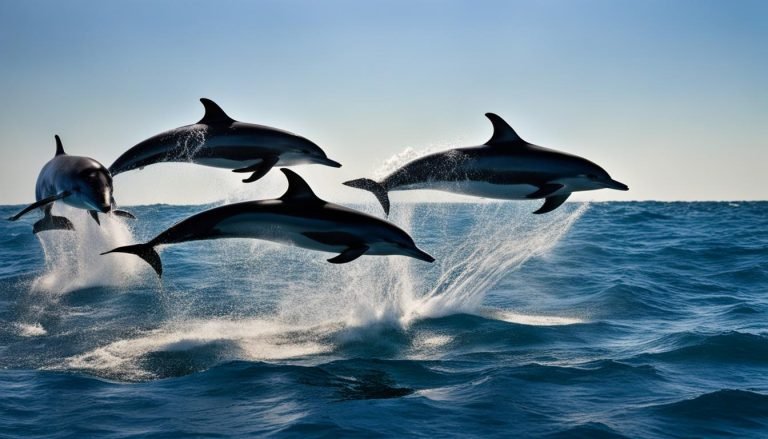Fish
Fish, the incredible inhabitants of the underwater world, are a diverse group of aquatic animals that contribute significantly to the Earth’s fauna. With over 34,000 known species, fish are the most diverse group of vertebrates on the planet. From the smallest colorful tropical fish to the mighty predators of the ocean, fish come in a wide array of shapes, sizes, and colors, each uniquely adapted to their specific aquatic habitats.
These fascinating underwater creatures have been evolving for millions of years, with their origins dating back to around 500 million years ago during the Cambrian period. They have conquered a remarkable range of environments, including freshwater, saltwater, and even extreme locations like the depths of deep-sea trenches.
Aquatic life thrives on the invaluable role fish play in the ecosystem. They serve as both predator and prey, forming an essential link in the food chain and contributing to the balance of aquatic environments. Additionally, fish serve as a vital food source for humans, with many species being commercially fished for consumption.
Join us as we dive deeper into the world of fish and explore their evolution, size variations, habitats, behaviors, hunting strategies, and the factors that impact their mortality rates.
Evolution
Fish belong to the phylum Chordata and subphylum Vertebrata, which includes all animals with a backbone.
The earliest known fish-like organisms appeared in the fossil record around 530 million years ago.
These early fish, known as jawless fish, lacked true jaws and paired fins. They were primitive, but they laid the foundation for the diverse fish species we see today.
Over time, fish evolved various adaptations to better survive and thrive in their aquatic habitats. These adaptations include the development of jaws, paired fins, gills for respiration, and scales for protection.
Fish also underwent significant diversification, resulting in a wide range of body shapes, sizes, and behaviors.
This diversification allowed fish to occupy different ecological niches and exploit various food sources.
Today, fish are classified into three major groups: jawless fish (e.g., lampreys), cartilaginous fish (e.g., sharks and rays), and bony fish (e.g., most common fish species).
Size
Fish come in a wide range of sizes, with some species measuring only a few centimeters long while others grow to enormous sizes. The smallest known fish species is the Paedocypris progenetica, which measures around 7.9 millimeters (0.31 inches) in length. On the other end of the scale, the largest fish species is the whale shark, which can reach lengths of up to 13 meters (42 feet) and weigh over 20 tons.
The size of fish is influenced by various factors, including genetics, habitat, and available food resources. While most fish species exhibit indeterminate growth, meaning they continue to grow throughout their lives, their growth rate tends to slow down as they get older. However, there are exceptions, such as salmon, which undergo dramatic growth spurts during specific life stages, such as when they migrate from freshwater to the ocean.
Habitat
Fish can be found in a wide range of habitats, including freshwater, saltwater, and even brackish environments. Freshwater fish inhabit rivers, lakes, ponds, and streams. Examples of freshwater fish include trout, catfish, and bass. Saltwater fish, also known as marine fish, live in the oceans and seas. This category includes well-known fish species like tuna, cod, and herring. Some fish species are restricted to specific habitats, such as coral reef fish, which inhabit tropical coral reefs. These fish are highly adapted to reef environments and rely on the complex structures provided by corals for shelter and food. Deep-sea fish inhabit the darkest depths of the ocean, where they face extreme conditions such as high pressure, cold temperatures, and limited food resources. These fish have unique adaptations that allow them to survive in these harsh environments.
Behavior
Fish exhibit a wide range of behaviors, many of which are specifically adapted to their habitats and ecological roles.
Schooling behavior is common among many fish species, where individuals gather in large groups for increased protection against predators and enhanced foraging efficiency.
Some fish display territorial behavior, defending specific areas or objects as their own, often to attract mates or protect their offspring. Examples include nesting behavior in some species.
Migratory behavior is observed in several fish species, where individuals undertake long-distance journeys to reach spawning grounds or find better feeding opportunities.
Fish also exhibit various feeding behaviors, including filter feeding, grazing, hunting, scavenging, and symbiotic feeding (such as cleaner fish).
Some fish species engage in mutualistic relationships, such as cleaner fish that remove parasites from larger fish, benefiting both parties involved.
Hunting
Fish play a crucial role as both predators and prey in aquatic ecosystems, forming an integral part of the food chain. Many fish species have evolved sophisticated predatory behaviors and feeding adaptations to effectively capture their prey.
Predatory fish are equipped with sharp teeth, powerful jaws, and streamlined bodies that enable them to pursue and capture their prey efficiently. Their physical attributes allow them to swiftly navigate through the water, using speed and agility to their advantage.
Some fish species employ ambush hunting strategies, remaining hidden or camouflaged to surprise unsuspecting prey. They patiently wait for the perfect opportunity to strike, ensuring a successful catch. Others rely on their speed and agility to chase and capture fast-moving prey, swiftly overtaking them in the water.
In addition to their physical characteristics and hunting strategies, certain fish species possess specialized adaptations for feeding. These adaptations include elongated jaws, needle-like teeth, or distensible stomachs that allow them to consume larger prey items. Such adaptations enhance their ability to secure a meal and ensure their survival.
On the other hand, prey fish have also developed various defense mechanisms to avoid predation and increase their chances of survival. These adaptations include spines, toxins, and camouflage, making it harder for predators to locate and capture them.
In the complex underwater world, the interactions between predator and prey fish demonstrate the ongoing evolutionary arms race that drives the development of hunting strategies and feeding adaptations.
Mortality
Like all living organisms, fish experience mortality as part of their life cycle. They face various natural causes that can lead to their demise. Predation is a significant factor in fish mortality, with larger fish and marine mammals preying on smaller fish species. These predatorial interactions play a crucial role in maintaining the balance of ecosystems.
In addition to predation, fish can also succumb to disease, old age, and environmental factors such as changes in water temperature, oxygen levels, or pollution. Diseases and parasites can cause mass mortality events in fish populations, often resulting in significant ecological impacts. These natural causes of fish mortality contribute to the natural turnover of fish populations, allowing for new generations to replace the old.
However, human activities have a substantial impact on fish mortality rates worldwide. Overfishing, driven by the demand for fish as a food source, can deplete fish populations, leading to imbalances in ecosystems and alterations in fish communities. Habitat destruction, pollution, and climate change are additional human-induced factors that impact fish mortality.
Pollution, such as chemical contaminants or plastic waste, directly harms fish or disrupts their habitats. This pollution not only affects fish survival but also threatens the overall health of aquatic ecosystems. Climate change, with its associated impacts like rising water temperatures, ocean acidification, and altered ocean currents, poses additional challenges to fish populations. These changes make fish more vulnerable to stressors, reduce their chances of survival, and disrupt the delicate balance of marine ecosystems.







